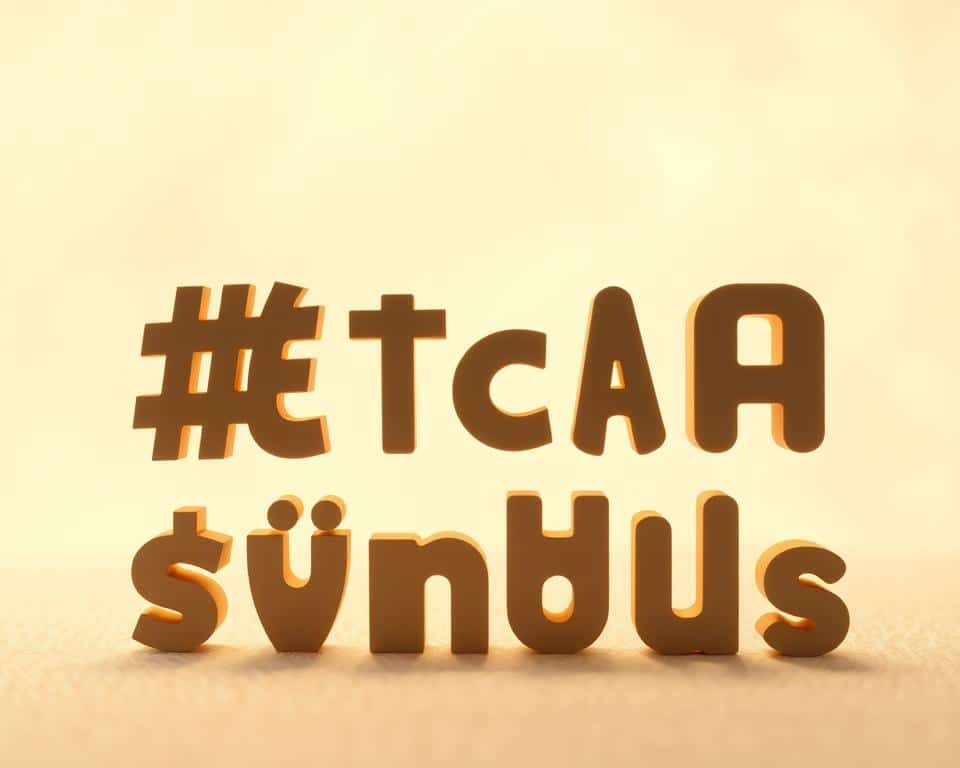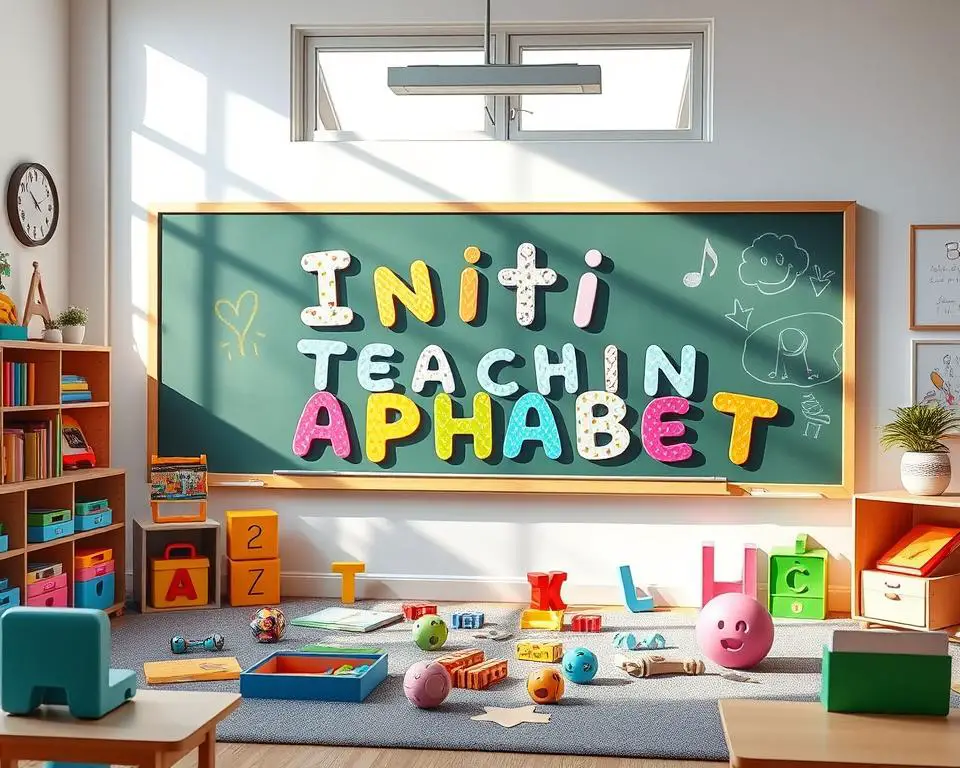The Initial Teaching Alphabet (ITA) is a key tool in early literacy. It’s made for young learners to make reading easier. By using ITA examples, teachers help kids start reading and understanding better.
This alphabet’s structure helps young minds learn complex language. It lays a strong base for future reading skills.
Key Takeaways
- The Initial Teaching Alphabet (ITA) is a specialized alphabet designed to aid early literacy development.
- Using ITA examples helps children learn to read more effectively and with greater confidence.
- Understanding the structure of ITA simplifies the learning process for young readers.
- ITA provides a solid foundation for future literacy success.
- Alphabet learning tools like ITA are crucial in the early educational stages of children.
Introduction to Initial Teaching Alphabet
The Initial Teaching Alphabet (ITA) is a tool to make English reading and writing easier for young students. It helps simplify how we teach reading and writing. This is key in teaching methods.
What is the Initial Teaching Alphabet?
The Initial Teaching Alphabet was created by Sir James Pitman in the 1960s. It has 44 symbols that match English sounds closely. This makes it simpler for kids to read and understand words.
This system aims to improve how well kids can read and spell. It’s especially important in their early years.
History and Background
Sir James Pitman started the ITA, inspired by his grandfather, Sir Isaac Pitman. Sir Isaac invented phonographic shorthand. James wanted to make English spelling easier.
By the 1960s and 1970s, ITA became popular in the UK and US. It was praised for helping kids learn to read better.
Purpose and Goals
The main ITA goals are to make learning to read easier. ITA aims to reduce spelling mistakes. This helps kids move smoothly from phonetic scripts to standard English.
The goals are to improve literacy rates and help kids learn to read well. It builds a strong foundation for learning standard English.
The Structure of the Initial Teaching Alphabet
The Initial Teaching Alphabet, or ITA, is a special system to help kids learn to read. It uses 44 symbols that make learning sounds easier. This helps kids understand how words sound.
ITA also has special characters and ligatures for unique sounds. These help kids get better at hearing and making sounds.
Understanding the 44 Symbols
The ITA has 44 symbols, each for a sound in English. These symbols are made to make learning to read simple. They help kids learn to read words correctly by linking sounds to symbols.

Special Characters and Ligatures
ITA also has special characters and ligatures. These include ‘th’ and ‘ng’ for sounds that usual letters can’t show. This makes learning sounds more complete and real.
Benefits of Using the Initial Teaching Alphabet for Early Learners
The Initial Teaching Alphabet (ITA) is great for young learners. It makes learning to read easier. The ITA uses a simple system that helps kids start reading well.
Simplified Learning Process
ITA makes learning easy for kids. It uses 44 symbols to show sounds in English. This makes learning phonetic patterns simpler.
The simplified phonetic structure of the ITA ensures that words are spelled exactly as they are pronounced, offering a clear and logical framework for teaching early literacy.
Research shows ITA helps kids read faster. Teachers say kids learn phonetics quicker. This lets teachers focus on other important reading skills.
Enhanced Reading Confidence
ITA boosts kids’ confidence in reading. When they can read words easily, they enjoy reading more. This is key for a lifelong love of reading.
Using ITA also improves kids’ self-esteem and grades. Confident readers do better in school. They’re more likely to join in class and feel less stressed about reading.
The table below shows how ITA differs from standard English in helping early learners:
| Aspect | Initial Teaching Alphabet | Standard English Orthography |
|---|---|---|
| Simplicity | High | Low |
| Consistency | Consistent sound-symbol relationship | Inconsistent sound-symbol relationship |
| Learning Curve | Short | Long |
| Reading Confidence | High | Variable |
| Adaptation to Speech | Direct | Indirect |
Initial Teaching Alphabet Examples in Practice
The Initial Teaching Alphabet (ITA) has made a big impact on modern education, especially in early literacy. In many classrooms, ITA examples show how it changes learning for young students.

In New York City public schools, teachers use ITA to help kids learn phonetics and pronunciation easily. ITA makes learning simpler, helping students read with more confidence and speed.
ITA focuses on clear sounds, which helps those who find traditional English hard. In kindergarten, teachers use ITA to teach letter-sound connections. This makes it easier for kids to read and improve their fluency.
Private schools in California also use ITA, leading to better literacy rates. Students using ITA often read more accurately and quickly. This method boosts their reading skills and helps them do better in school.
The table below shows how ITA improves reading levels in a classroom over six months:
| Month | Reading Level Improvement |
|---|---|
| 1 | 5% |
| 2 | 10% |
| 3 | 15% |
| 4 | 20% |
| 5 | 25% |
| 6 | 30% |
These examples show the real benefits of using ITA in classrooms. Success stories and improvements highlight ITA’s potential to change early childhood education. It gives kids a strong start for their future in school.
Challenges and Limitations
The Initial Teaching Alphabet (ITA) has many benefits for young learners. Yet, it also faces some challenges. This part will look at the difficulties in moving to standard English and how different accents and dialects affect ITA.
Transitioning to Standard English Orthography
The challenges of ITA are clear when students move to standard English. The change can be tough. This is because standard English has different spelling and sound rules than ITA.
Teachers need to understand ITA transition issues well. They must help students match ITA’s 44 symbols with standard English. This ensures the transition doesn’t slow down the child’s learning.

Accents and Dialect Variations
The dialect impact on ITA is another big issue. English accents and dialects vary widely in the U.S. ITA’s uniform approach might not fit these differences well.
Dialects like Southern American English, African American Vernacular English (AAVE), or New York City English add complexity. They can cause confusion and slow down learning.
So, it’s key to understand the dialect impact on ITA. Teachers should use flexible methods to meet the needs of all students. This helps make learning smoother for everyone.
Successful Case Studies and Research
The Initial Teaching Alphabet (ITA) has been studied for decades. Many ITA case studies show it helps with early reading skills. We’ll dive into these studies and hear from educators and parents who’ve seen its effects.

Results from Historical Studies
Older ITA research shows kids who learn with ITA get a strong start in reading. Studies from the 1960s and 1970s, like those by the University of London, found big improvements in reading skills. These results helped prove the ITA’s worth.
Testimonials from Educators and Parents
Teachers and parents share their experiences with the ITA. They say it makes learning to read easier and boosts confidence. Parents also mention that their kids enjoy reading more and feel less scared.
One teacher said, “The ITA has changed how my students read. They’re more excited and less stressed by English spelling.”
Together, ITA studies and teacher feedback show its value in teaching reading. This method, supported by research and real-life stories, helps young learners read better.
Alternative Methods and Comparisons
Looking into ITA alternatives helps teachers find the best ways to teach reading to young students. Color-coded learning and phonics are two popular methods. They are known for their unique benefits.
Color-Coding Techniques
Color-coded learning is a new way to teach language. It uses colors to show different parts of words. This makes it easier for kids to learn and remember.
It not only helps with recognition but also keeps kids interested. This makes it a great choice compared to ITA.

Comparison with Phonics
When we look at phonics vs. ITA, we see their strengths. Phonics teaches kids to sound out words by letters. It’s a direct method used in many schools.
ITA, on the other hand, uses symbols for sounds. This makes reading easier for beginners.
Both methods aim to build a strong reading foundation. Understanding which one works best depends on the learning environment:
| Method | Focus | Advantages | Disadvantages |
|---|---|---|---|
| Phonics | Letter-Sound Relationships |
|
|
| Color-Coding | Visual Distinction |
|
|
| ITA | Phonemic Representation |
|
|
How to Implement Initial Teaching Alphabet in the Classroom
To implement ITA in the classroom, teachers need a clear plan. They must first learn about ITA’s unique symbols and sounds. Here’s a guide to help teachers add ITA to their lessons:
- Teacher Training: Teachers need thorough training. They should learn about ITA’s 44 symbols, special characters, and sounds.
- Curriculum Development: Create lesson plans that use ITA step by step. Start with simple words and move to more complex sentences. This builds reading confidence and familiarity.
- Instructional Materials: Use flashcards, charts, and ITA books. Interactive tools and software can also help students learn better.
- Assessment and Feedback: Regular tests show how students are doing. Feedback and encouragement keep them motivated and confident.
- Parental Involvement: Get parents to use ITA at home too. Give them resources and tips to help their kids learn.
“Using ITA in our classroom has changed how our students see reading. The simple symbols help them read words better, making them more confident,” says Julia, an elementary school teacher from California.
| Strategies | Benefits |
|---|---|
| Comprehensive Teacher Training | Ensures accurate and effective use of ITA |
| Curriculum Development | Structured learning path for gradual progress |
| Instructional Materials | Enhanced engagement and understanding |
| Assessment and Feedback | Identifies areas needing reinforcement |
| Parental Involvement | Reinforces learning at home |
Conclusion
The Initial Teaching Alphabet (ITA) has been key in early literacy for many. It makes learning to read easier and boosts confidence. ITA’s 44 symbols and special characters help young learners grasp English better.
Yet, ITA faces challenges like moving to standard English and dealing with different accents. Despite this, many success stories show its effectiveness. Teachers and parents share how ITA has helped their students.
As we look to the future, ITA could adapt to new teaching methods and technology. The aim is to keep early literacy engaging and empowering. With ongoing updates, ITA’s future looks bright, helping future generations succeed.



